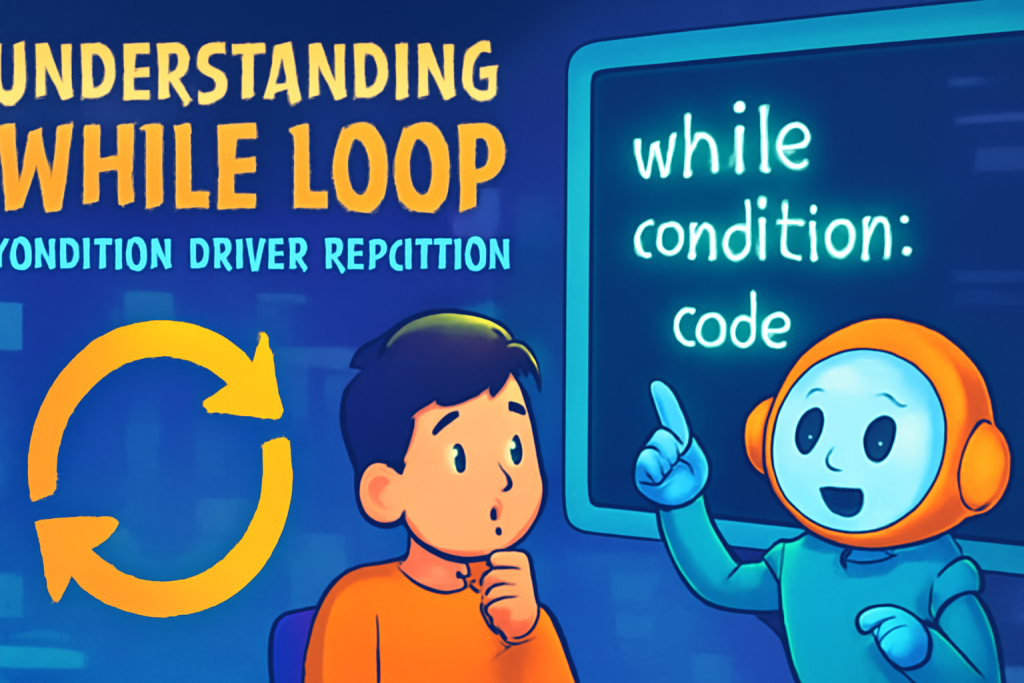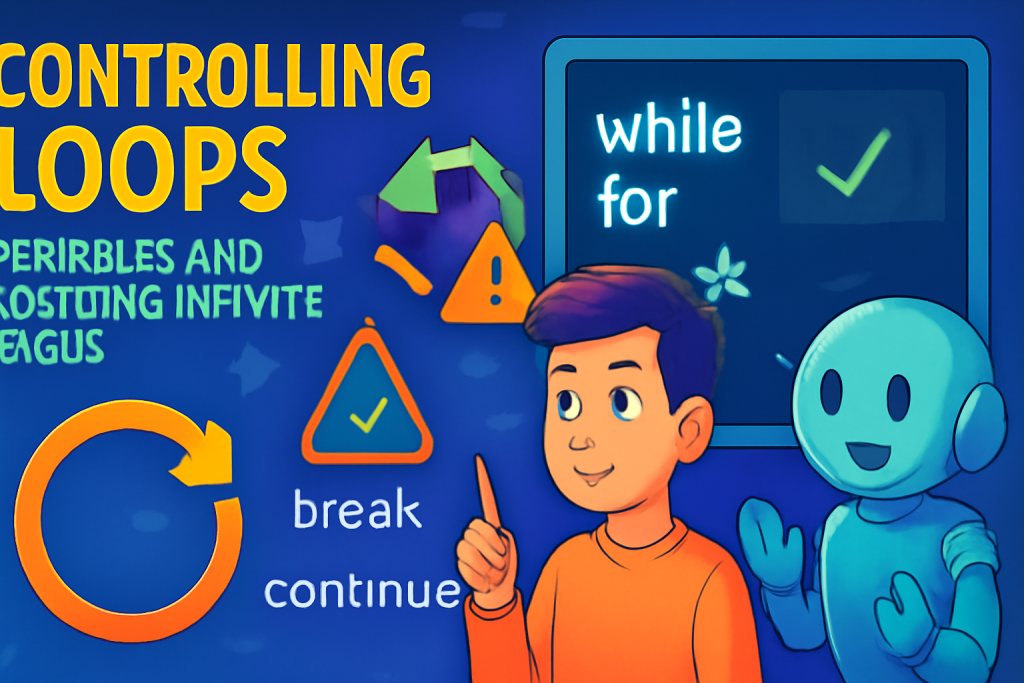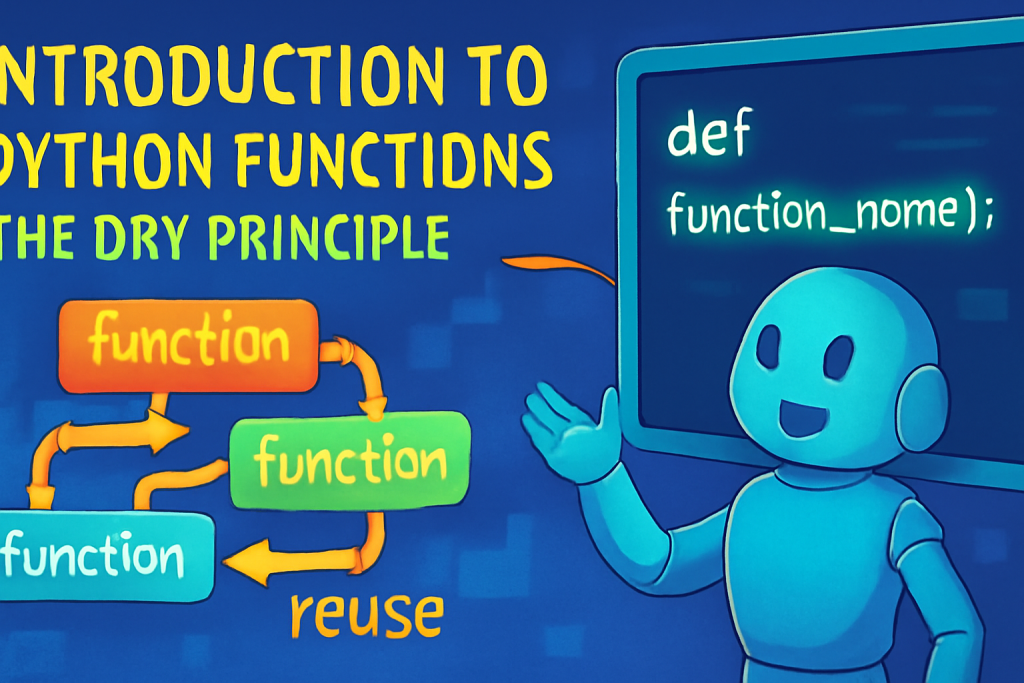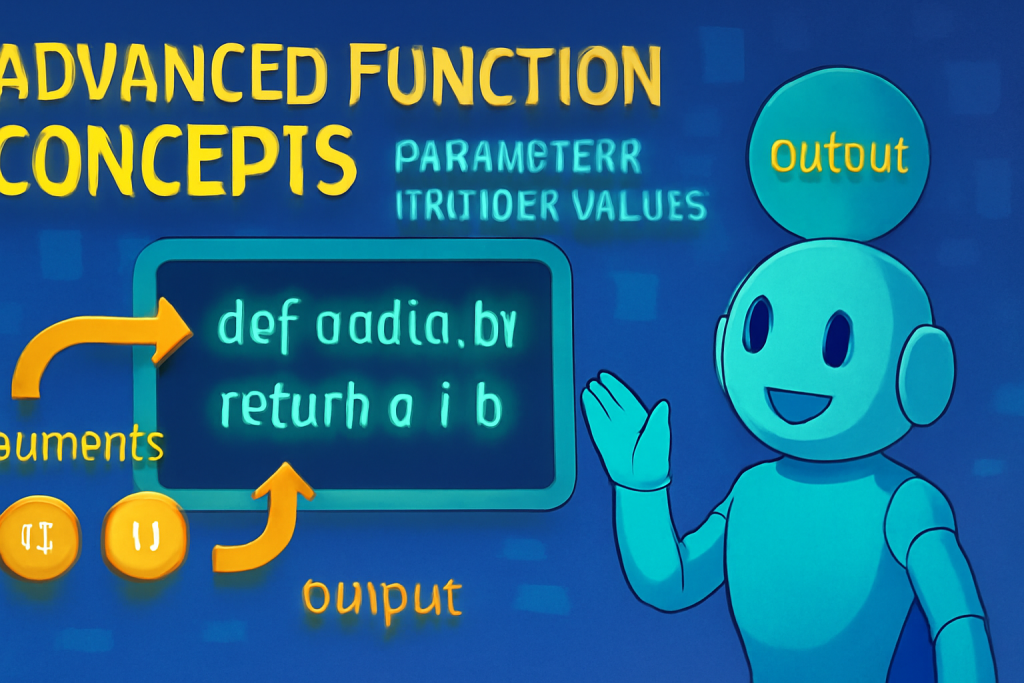
Mastering Python Loops and Functions: When to Use While Loops and Building Reusable Code
Imagine coding a program that runs forever by mistake. Your screen freezes, and frustration hits. This happens if you miss the basics of loops and functions. In our last chat on Python, we nailed the for loop. Now, let’s pick up there. We’ll wrap up while loops and dive deep into functions. These tools help you control flow and avoid messy code repeats.
You know for loops from before. They shine when you count exact repeats. But life isn’t always predictable. While loops step in for those fuzzy cases. Today, we focus on two big ideas: while loops for flexible repeats and Python functions for smart, reusable code. Get ready to build cleaner programs.
Understanding the While Loop: Condition-Driven Repetition

While loops keep your code running based on a condition. They check if something is true, then execute tasks inside. This setup fits real tasks where you can’t guess the end.
The Core Difference: Certainty vs. Condition
For loops work great when you know the repeat count. Say, print 10 items. You set it and go. While loops differ. Use them when the number of runs is unknown. They rely on a condition staying true.
Think of it this way. An if statement checks once and stops. But while loops repeat as long as the condition holds. No built-in repeat count. Just a rule that guides the flow. This makes while loops perfect for dynamic scenarios.
Don’t confuse them with if. If tests and acts once. While tests, acts, tests again. Keep repeating until false. That’s the key split.
Real-World Application: Warranty Expiration Example
Picture buying a car. The company gives a warranty. It lasts three years or 60,000 kilometers—whichever comes first. You don’t know which hits first. Time ticks, miles add up. A while loop checks both. It runs until one condition flips true.
In code, set variables for days and kilometers. Loop while both stay below limits. Print status each time. When either maxes out, stop. Warranty ends. This mirrors unknown repeats in apps, like user logins or game scores.
Such examples show while loops in action. They handle uncertainty better than fixed counts. No need to predict exact steps. Just watch the condition.
Essential Syntax and Execution Flow
Start with the word “while,” add your condition, then a colon. Next line, indent the code block. That’s the body. Python reads the condition first. If true, run the body. Loop back to check again.
Flow is simple. Condition true? Execute statements. False? Jump out. Only one exit: when false. Unlike for loops with built-in counters, while needs your help to change the condition.
Watch for mistakes. Forget to update the variable inside? Infinite loop. System hangs. Always include a step that alters the test.
Practical While Loop Implementation Examples
Let’s code one. Print numbers less than 5. Set current_number = 1. While current_number < 5, print it, then add 1. Run it. Outputs 1, 2, 3, 4. Stops at 5.
Now, sum first 10 natural numbers. upper_limit = 10. total = 0. current = 1. While current <= upper_limit, add current to total, then current += 1. Print total: 55. Easy math check.
Try user input. Ask for a limit. Sum up to that. If user says 100, loop runs more. Flexibility rules. These snippets build your skills fast.
Controlling Loops: Variables and Avoiding Infinite Cycles

Loops need tight control. Bad management leads to crashes or endless runs. Focus on variables that steer the process. Learn to spot traps early.
The Crucial Role of the Loop Control Variable
Every while loop needs a control variable. It tracks progress. Say, current_number starts at 1. Inside the loop, increment it. This changes the condition over time.
Without it, the loop stalls. Condition stays true forever. Your program eats resources. Always update this key player in the body. It’s the heartbeat.
In sum example, current_number adds to total, then grows. Miss the growth? Stuck at 1, adding forever. Precision matters here.
Dry Run Exercise: Tracing Variable State
Dry run means simulate without code. For sum to 10. Start: current=1, total=0. Check 1 <=10? Yes. Add 1 to total (now 1), current=2. Repeat.
Second pass: 2<=10? Yes. Total=3, current=3. Keep going. At current=10, total=55, current=11. Next check: 11<=10? No. Exit.
Trace like this spots errors. See how values shift. Builds confidence. Try it on paper for any loop.
Advanced Practice: Handling User Input and Condition Logic
Combine with if-else. User enters a number, say 20. While it’s above 0, check even or odd. If num % 2 == 0, print even. Else odd. Subtract 1 each time. Lists from 20 down to 1.
Handle bad input. If user gives -5, check if >0 first. If not, print error. Skip loop. Prevents crashes.
Another: Divide by 3 until under 10. Count divisions. While num >=10, num //=3, count +=1. Shows loops with math ops.
Practice these. Input variations. Condition nests. You’ll master control.
Introduction to Python Functions: The DRY Principle

Tired of copying code blocks? Functions fix that. They package tasks for reuse. Cut repetition, boost clarity. Enter the DRY rule: Don’t Repeat Yourself.
Why Functions? The Problem of Code Duplication (The Juice Machine Analogy)
Building a juicer each time for juice? Silly. Make one once. Use it anytime. Functions work the same. Write code for a task, like adding numbers. Call it wherever needed.
Without them, you paste lines everywhere. Bugs creep in. One fix means hunting copies. Functions centralize logic. Change once, affects all.
In big projects, thousands of lines pile up. Duplication muddies flow. Functions slice problems small. Like juicer, define rules, then pour in inputs.
Functions vs. Repetition: Improving Readability and Maintainability
Large code scares readers. Who tracks what? Functions split into chunks. Each handles one job. Easier to debug, test, share.
Say, chat bot app. User uploads file. One function checks if PDF. Another processes text. Third summarizes. Chain them. Flow makes sense.
Maintain? Update summary function alone. No ripple mess. Readability jumps. Pros scan fast, spot issues quick.
Built-in vs. User-Defined Functions
Python gifts built-ins. Like .upper() for strings. Pass text, get caps. No code needed. Saves time on basics.
User-defined? You create them. For custom needs, like custom math. Build once, use often. Both cut work. Start with built-ins, then craft yours.
Defining and Calling Functions: Syntax and Scope

Functions start with definition. Then call to run. Scope rules where variables live. Get these right, code flows smooth.
Function Definition Syntax: The def Keyword
Use “def” then name, like def greet():. Colon ends the line. Indent body below. That’s your task list.
Body runs only on call. Print “Hello” inside. Def alone does nothing. Like recipe on paper. Needs cooking.
Indent matters. Python uses spaces for blocks. Wrong indent? Errors. Keep consistent, four spaces usual.
Function Invocation: Making the Code Execute
Call with name and ( ). greet(). Now it prints. Skip call? Silence. Definition preps, call activates.
For add_two_numbers(): Inside, a=5, b=3, print(a+b). Call it. Gets 8. Pass values later for flexibility.
Test small. Define, call, check output. Builds habit.
Actionable Tip: Keeping Functions Small and Focused
One job per function. File upload? Don’t mix processing. Separate checks, actions. Easier tweaks.
In bot example, def upload_file(): handles input. def check_pdf(): verifies type. Chain calls. Keeps code lean.
Small functions test easy. Reuse high. Aim for 5-10 lines max.
Advanced Function Concepts: Parameters and Return Values

Functions get powerful with inputs and outputs. Parameters feed data. Return sends results back. Master these for dynamic code.
Parameters: Providing Dynamic Input to Functions
Parameters are slots for values. def make_tea(guests):. Call make_tea(4). Makes four cups.
Add more. def make_tea(guests, sugar_free):. Pass 4, 1. Adjusts for one no-sugar. Same logic, varied runs.
Like office boy. Base task fixed. Details change per call. Builds adaptable code.
The Power of return: Receiving Output from a Function
Return hands back a value. def add(a, b): return a+b. result = add(2,3). Prints 5.
No return? Function acts but gives nothing. Like void task. Use return for math, data fetch.
Some return True/False for success. Confirms action done. Safe practice.
Scope Awareness: Local vs. Global Variables
Local vars live inside function. def test(): x=10. Outside? x undefined. Scope limits to body.
Global? Declare outside. Accessible everywhere. But careful. Changes affect all. Use locals first.
Mix up? Get None or errors. Like x= add() without return. Prints None. Scope rules save headaches.
Conclusion: Thinking Like an Engineer, Not Just a Coder

We’ve covered while loops for unknown repeats and functions for clean, reusable code. While handles conditions dynamically—think warranties or user inputs. Functions enforce DRY, splitting big tasks into focused pieces. Master these, and your Python skills level up.
Key takeaways: Always update loop controls to avoid hangs. Define functions with def, call to run, use return for outputs. Watch scope—locals stay inside, globals span out. Practice dry runs and small functions.
Shift your mindset. Don’t just code—engineer solutions. Optimize loops for speed, like batching database checks. Think efficiency from day one. Start building: Try a while loop with functions today. Your programs will run smoother, faster. What’s your next project? Dive in now.



